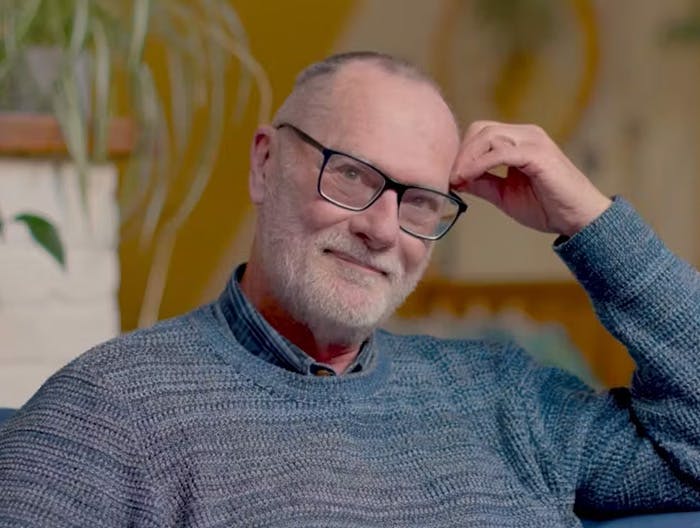IS THERE A CURE FOR HIV/AIDS?
Since the start of the HIV epidemic, researchers, scientists, and healthcare professionals have tirelessly worked to understand the virus and develop effective treatments. These advancements allow people living with HIV to suppress the virus to undetectable levels, not only improving their own health but also preventing transmission to others.
Even with the medical advancements over the last 40 years, the quest for an HIV/AIDS cure remains of great importance. Managing HIV through antiretroviral (ARV) therapies has been a vital step, but there is so much more to do.
Treatments today have become far more convenient for people living with HIV, vastly improving their life expectancy and quality of life. Despite this, taking life-long medication is essential and can be emotionally and physically challenging. Not taking medication exactly as prescribed can cause HIV to become resistant to one or more ARVs, which makes the treatment less effective.1 Side effects from ARVs and other HIV-related health issues can also impact their daily lives.
Even whilst taking ARVs, people living with HIV often have higher levels of inflammation and immune activity than those without HIV.2 This persistent inflammation can increase the risk of other health problems such as heart disease, cancer, and brain issues.3
Combined with the social stigma associated with HIV, these concerns highlight the urgent need to find a cure for HIV.4
WHAT MAKES CURING HIV SO DIFFICULT?
The greatest challenge to curing HIV permanently is the virus’ ability to hide and remain dormant in pockets of healthy immune cells, specifically CD4+ T-cells. These hidden HIV pockets are called ‘latent reservoirs’ and consist of HIV-infected immune cells that enter a resting state, also known as ‘latent state’.
In these cells, HIV has integrated into the genome and become dormant. Even if a person has successfully suppressed their HIV through ARV treatment, the latent reservoir can re-activate if treatment is stopped. This is a major hurdle in the quest to find a cure for HIV.4,5
Current treatments stop HIV from infecting new cells. However, ARVs do not affect the cells that already have HIV integrated in their genome. These infected cells are long-lived and allow HIV to hide from the immune system.6 Unmasking the HIV hiding in these cells and eliminating them is a challenge.
At ViiV Healthcare, we are committed to tackling these complexities of HIV cure research. Despite the challenges posed by the latent reservoir, we remain steadfast in our pursuit of finding a cure to help end the HIV epidemic. We’re here until HIV isn’t.
OUR APPROACH TO CURING HIV
ViiV’s scientists are at the forefront of HIV research, leading groundbreaking studies and developing new techniques aimed at an HIV cure. ViiV’s pursuit of a cure centres around identifying, creating, and developing medicines that are not only highly effective but also well-tolerated. Fully understanding and eliminating the dormant latent reservoir of HIV is a complex task that requires ongoing collaboration among research teams.
The road to an HIV cure calls for innovation, creativity, and most of all, persistence.
Our ‘induce and reduce’ strategy
Getting to an HIV cure requires many different steps and methods. Our long-term goal is a 'sterilising cure', which means completely eliminating the virus from the body. For now, our first target is a 'functional cure', where the virus is controlled without the need for constant treatment.7
Unless we can find a way to expose the hidden HIV and selectively target the latent reservoir, ongoing treatment will be required to keep the virus at bay. Currently, ViiV’s HIV cure research aims to target the latent reservoirs through the concept of ‘induce and reduce’.8
We aim to drive the HIV that is lying dormant in human immune cells – the reservoir – out of hiding (induce) so that we can eliminate it (reduce). The ‘induce and reduce’ agents will be used alongside suppressive ARV therapy to protect healthy cells from the virus.8
If successful, the advancement of these agents could hold the answer to the question ‘Can HIV be cured?’.
Reactivating the virus in an effective and safe way has been a major challenge, but pioneering research on the ‘induce and reduce’ strategy — published in the journal Nature — showcases a scientific breakthrough.8 For the first time, a new class of drugs known as IAP inhibitors (inhibitors of apoptosis) were studied. IAP inhibitors activate a signalling pathway that could induce the hidden HIV to reactivate and become visible. This groundbreaking research that ViiV collaborated on showcases efforts to push the dormant virus out of hiding in two HIV animal models.8
OUR COLLABORATIONS: JOINING FORCES TO FIND A CURE FOR HIV
At ViiV, we are bringing together experts from different fields to explore various methods and compounds in the quest to cure HIV. We have active collaborations with pharma, biotech companies, government agencies, academic institutions and not-for-profit organisations, all focused on ending the epidemic. These collaborations play a key role in advancing HIV cure research.
ViiV has worked with partners on the groundbreaking ‘induce and reduce’ research, which was heralded as ‘amongst the top ten most remarkable discoveries of 2020’ by the journal Nature.9
HOW FAR AWAY IS A CURE FOR HIV?
The effort to find a cure for HIV is a collective endeavour involving many research teams and organisations worldwide. Below we have listed a few of the most remarkable recent developments in HIV cure research:
- February 2022 - a woman living with HIV underwent a unique treatment using stem cells from cord blood and a relative's adult stem cells to treat her acute myeloid leukaemia. After stopping ARVs for 14 months, there was no evidence of HIV returning, signalling a potential breakthrough in HIV cure research.10
- July 2023 - a man ‘cured’ of HIV , known as the 'Geneva patient', underwent a stem cell transplant as cancer treatment. The stem cells were sourced from a donor with a genetic mutation causing resistance to HIV, leading to undetectable HIV levels after he stopped taking ARVs.11
- In July 2023, a new gene-editing therapy called EBT-101 for HIV received fast-track designation from the FDA. This treatment aims to cure HIV and is being tested in a clinical trial that is expected to finish in March 2025.12
It is worth noting that the treatments the man and woman above received were invasive, cancer-related, and not scalable to 39 million people across the globe with HIV; nevertheless, they still are groundbreaking findings that bring us one step closer to a cure for HIV.13
Developing an HIV cure is complex, requiring long-term commitment. At ViiV Healthcare, we aim to progress research from lab to clinical studies. Our mission: cure HIV, alleviating treatment burden and stigma, and leaving no person living with HIV behind.
It is our life’s work to end the HIV epidemic, and we will be here until HIV isn’t.
If you or someone you know is living with HIV, you can actively contribute to the search for an HIV cure by participating in an HIV clinical trial or study.
Abbreviations
ARV, antiretroviral; DNA, deoxyribonucleic acid; IAP, inhibitors of apoptosis.
References
- S. Bertagnolio, Perno CF, Vella S, Pillay D. The Impact of HIV Drug Resistance on the Selection of First- and Second-Line ART in Resource-Limited Settings. The Journal of Infectious Diseases. 2013;207(suppl 2)
- Poor CD4 Cell Recovery and Persistent Inflammation Despite Viral Suppression | NIH. HIV.gov. Published June 3, 2021. Accessed June 6, 2024. https://clinicalinfo.hiv.gov/en/guidelines/hiv-clinical-guidelines-adult-and-adolescent-arv/poor-cd4-cell-recovery-and-persistent
- Hileman CO, Funderburg NT. Inflammation, Immune Activation, and Antiretroviral Therapy in HIV. Current HIV/AIDS Reports. 2017;14(3):93-100. doi: https://doi.org/10.1007/s11904-017-0356-x
- Bonney EY, Lamptey H, Kyei GB. HIV cure: an acceptability scientific agenda. Curr Opin HIV AIDS. 2023;18(1):12-17. doi:10.1097/COH.0000000000000771
- HIV info. What is a latent HIV reservoir? Accessed January 2024 https://hivinfo.nih.gov/understanding-hiv/fact-sheets/what-latent-hiv-reservoir.
- Castro-Gonzalez S, Colomer-Lluch M, Serra-Moreno R. Barriers for HIV Cure: The Latent Reservoir. AIDS Res Hum Retroviruses. 2018;34(9):739-759. doi:10.1089/AID.2018.0118.
- Xu W, Li H, Wang Q, et al. Advancements in Developing Strategies for Sterilizing and Functional HIV Cures. Biomed Res Int. 2017;2017:6096134. doi:10.1155/2017/6096134
- Nixon CC, Mavigner M, Sampey GC, et al. Systemic HIV and SIV latency reversal via non-canonical NF-κB signalling in vivo. Nature. 2020;578(7793):160-165. doi:10.1038/s41586-020-1951-3
- Viruses, microscopy and fast radio bursts: 10 remarkable discoveries from 2020. Nature. 2020;588(7839):596-598. doi: https://doi.org/10.1038/d41586-020-03514-8
- Hsu J, Van Besien K, Glesby MJ, et al. HIV-1 remission and possible cure in a woman after haplo-cord blood transplant. Cell. 2023;186(6):1115-1126.e8. doi:10.1016/j.cell.2023.02.030
- No Rebound 20 Months After ART Stops After Novel Stem Cell Transplant. IAS conference on HIV Science. IAS 2023, July 23-26, 2023. Brisbane. Accessed January 2024. https://www.natap.org/2023/IAS/IAS_38.htm.
- Excision BioTherapeutics Receives FDA Fast Track Designationfor EBT-101, a First-in-Class CRISPR-Based Gene Therapy Candidate to Functionally Cure HIV-1. Excision BioTherapeutics. July 20, 2023. Accessed January 2024. https://www.globenewswire.com/news-release/2023/07/20/2708048/0/en/Excision-BioTherapeutics-Receives-FDA-Fast-Track-Designation-for-EBT-101-a-First-in-Class-CRISPR-Based-Gene-Therapy-Candidate-to-Functionally-Cure-HIV-1.html.
- HIV and AIDS Epidemic Global Statistics. HIV.gov. Published 2022. Accessed June 5, 2024. https://www.hiv.gov/hiv-basics/overview/data-and-trends/global-statistics
YOU MAY ALSO BE INTERESTED IN:
We’ve got more than 50 active collaborations worldwide with pharmaceutical and biotechnology companies, government agencies, academic institutions and not-for-profit organisations to broaden our capabilities and enhance our performance.
Advances in treatment have dramatically improved the life expectancy of people living with HIV (PLHIV), which is welcome progress. However, challenges remain for those ageing with HIV.
In collaboration with Politico, we explore how Governments, civil society and industry share views on the EU mandate we need to achieve the 2030 UNAIDS goals in Europe and beyond.
NP-GBL-HVX-COCO-230025 April 2025
If you get any side effects, talk to your doctor, pharmacist, or nurse. This includes any possible side effects not listed in the package leaflet. You can also report side effects directly via the GSK Reporting Tool link https://gsk.public.reportum.com/. By reporting side effects, you can help provide more information on the safety of this medicine.
If you are from outside the UK, you can report adverse events to GSK/ ViiV by selecting your region and market, here.


